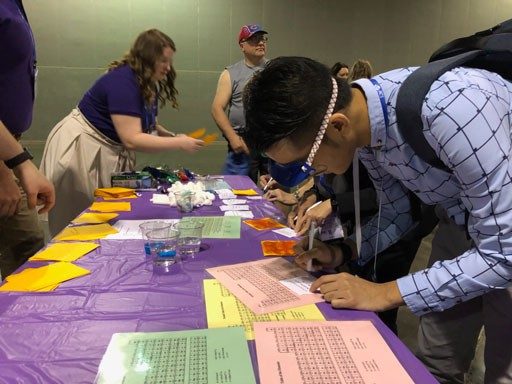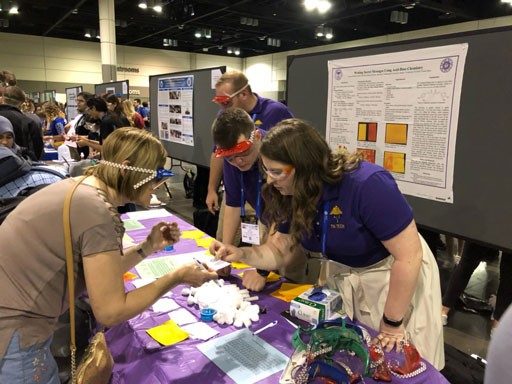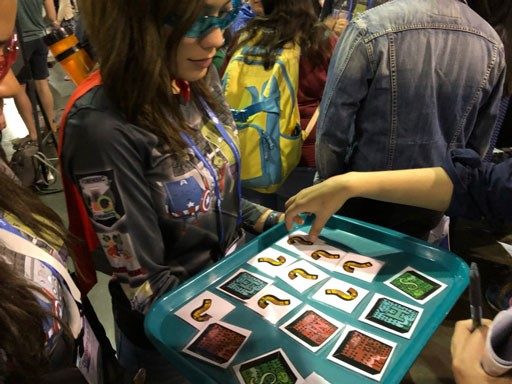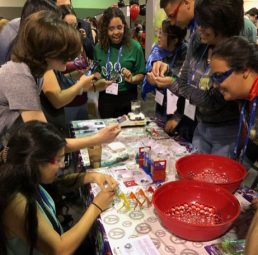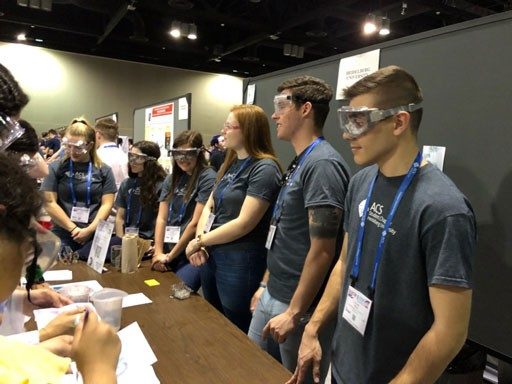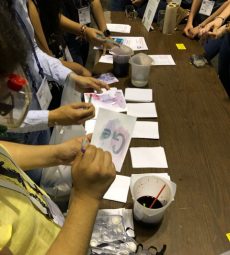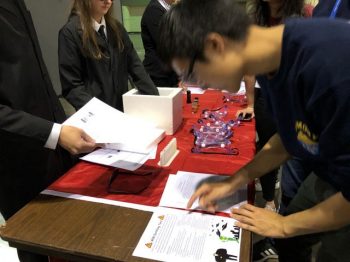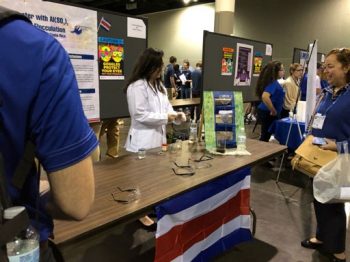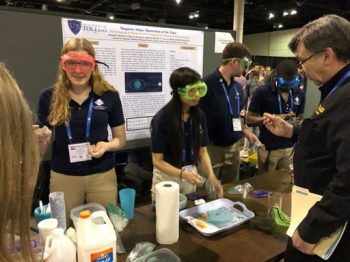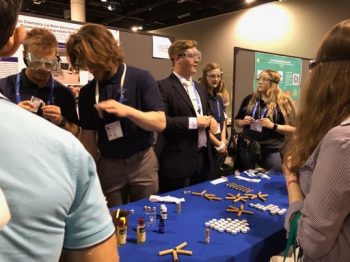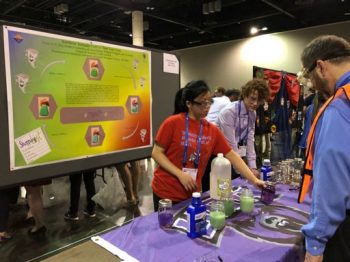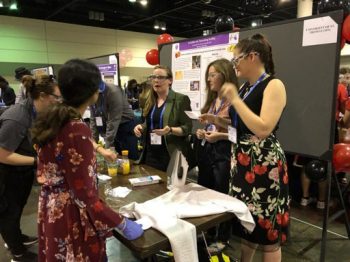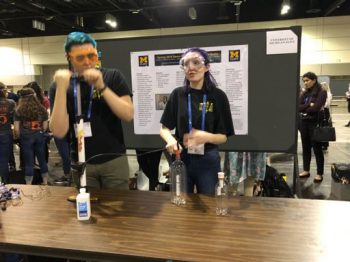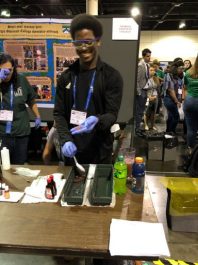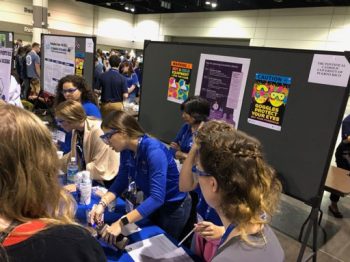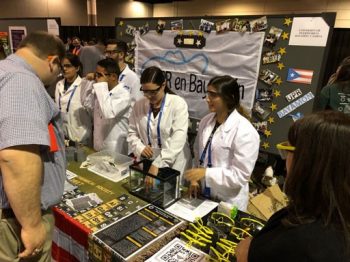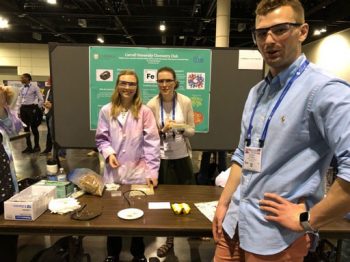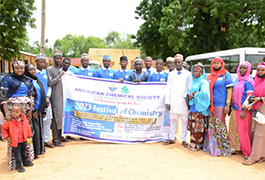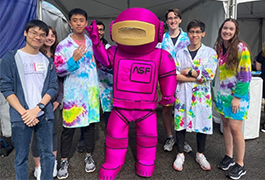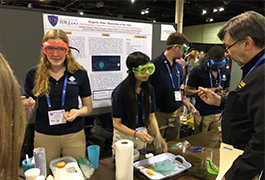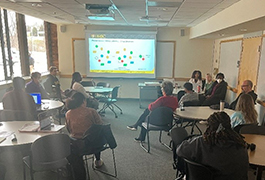ACS Student Chapters Showcase Their Best Demos at the 2019 ChemDemo Exchange
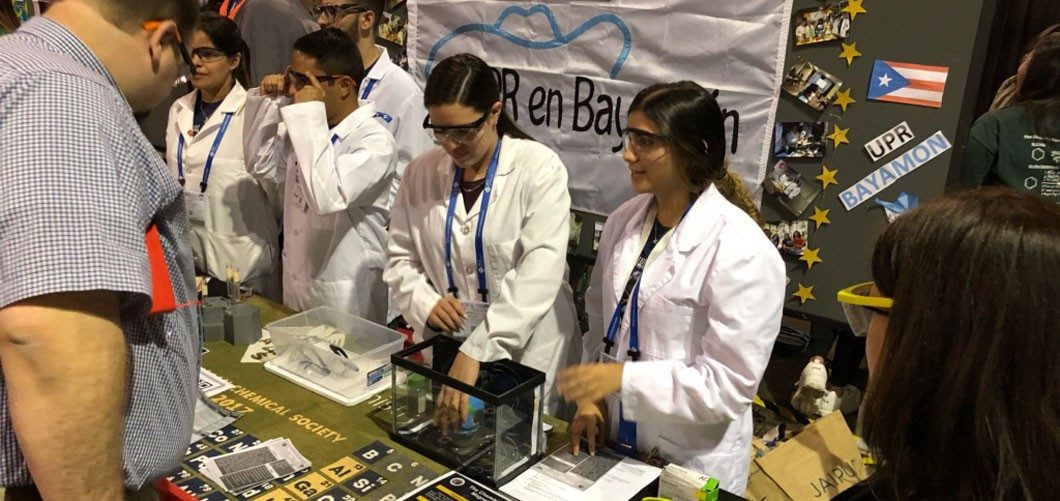
More than 30 ACS student chapters took part in the ChemDemo Exchange at the 257th ACS National Meeting in Orlando last month. Using only household chemicals, students shared ways to explain everything from chemical equilibrium to phosphorescence.
In honor of the 2019 International Year of the Periodic Table of Chemical Elements, several chapters also incorporated this storied resource into their activities. Here are three of our favorites, along with their procedures.
Top Picks
Tennessee Technological University
The ACS Student Chapter at Tennessee Technological University used a combination of hydrophobicity and acid-base chemistry to code messages hidden in the periodic table. Candles were used to write codes in colorless wax on goldenrod paper. When the paper was sprayed with Windex, the basic solution caused the goldenrod color to turn red. However, the hydrophobic wax areas repelled the aqueous Windex and remained unchanged, revealing the code.
Tennessee Tech chapter members uncover hidden codes and use the periodic table to decipher the messages.
Interamerican University of Puerto Rico at Ponce
The ACS Student Chapter at Interamerican University of Puerto Rico at Ponce incorporated a closer look at individual elements in a series of activities titled, “The Chemistry of Superheroes.” They explored the properties of Nitinol (the nickel/titanium alloy “memory metal”), hydrogels incorporating Na+ and Ca2+ ions, and even played an elemental memory game.
Interamerican University of Puerto Rico chapter members guide participants through an element memory game and an exploration of hydrogels.
Heidelberg University
The ACS Student Chapter at Heidelberg University in Tiffin, OH, had participants assemble a periodic table. Using the acid-base indicator properties of grape juice, participants uncovered hidden messages in the form of elemental symbols.
Participants used grape juice to uncover hidden elements and assemble a periodic table at a demo created by the ACS Student Chapter at Heidelberg University.

